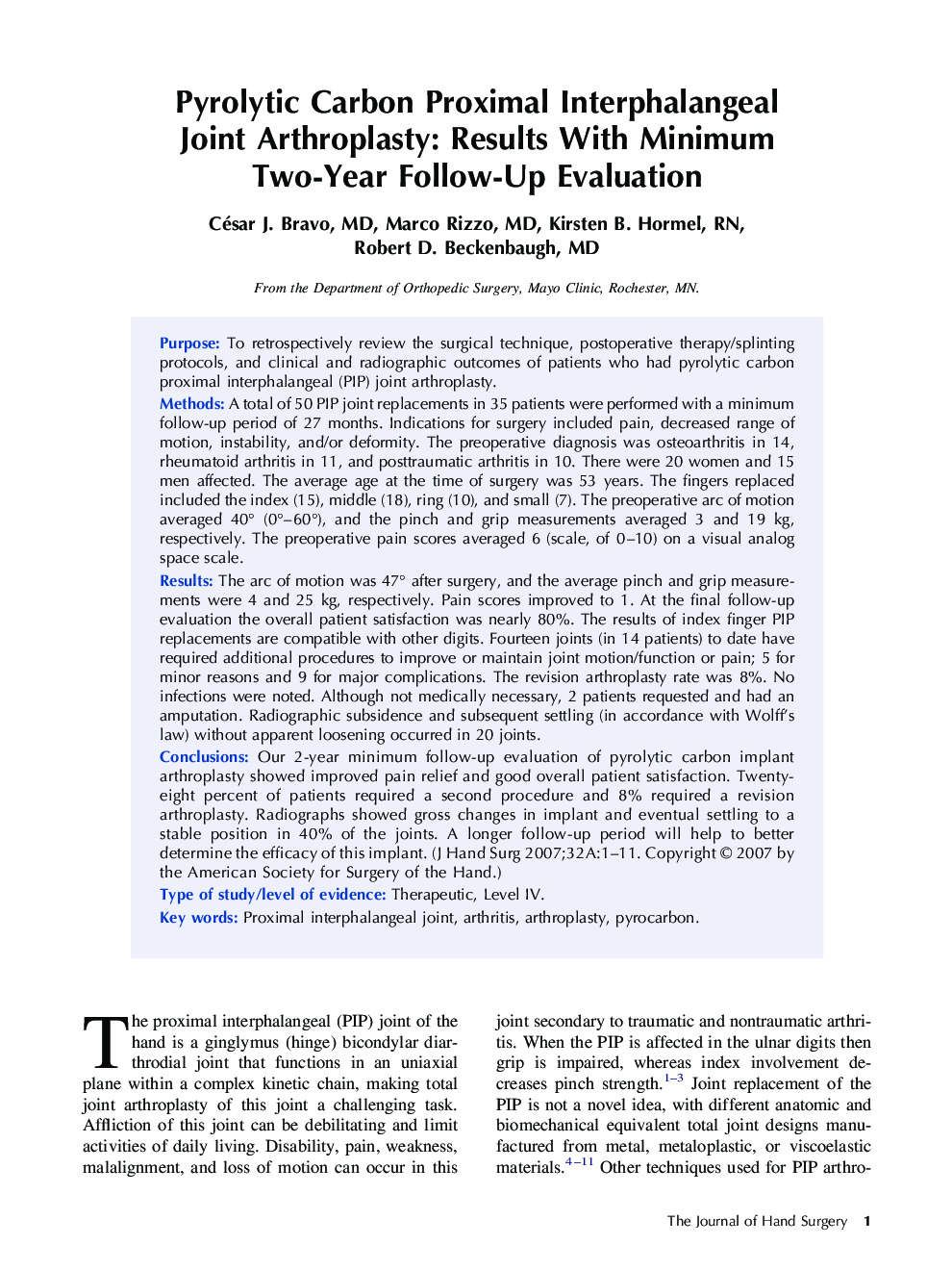| کد مقاله | کد نشریه | سال انتشار | مقاله انگلیسی | نسخه تمام متن |
|---|---|---|---|---|
| 4071212 | 1604457 | 2007 | 11 صفحه PDF | دانلود رایگان |

PurposeTo retrospectively review the surgical technique, postoperative therapy/splinting protocols, and clinical and radiographic outcomes of patients who had pyrolytic carbon proximal interphalangeal (PIP) joint arthroplasty.MethodsA total of 50 PIP joint replacements in 35 patients were performed with a minimum follow-up period of 27 months. Indications for surgery included pain, decreased range of motion, instability, and/or deformity. The preoperative diagnosis was osteoarthritis in 14, rheumatoid arthritis in 11, and posttraumatic arthritis in 10. There were 20 women and 15 men affected. The average age at the time of surgery was 53 years. The fingers replaced included the index (15), middle (18), ring (10), and small (7). The preoperative arc of motion averaged 40° (0°–60°), and the pinch and grip measurements averaged 3 and 19 kg, respectively. The preoperative pain scores averaged 6 (scale, of 0–10) on a visual analog space scale.ResultsThe arc of motion was 47° after surgery, and the average pinch and grip measurements were 4 and 25 kg, respectively. Pain scores improved to 1. At the final follow-up evaluation the overall patient satisfaction was nearly 80%. The results of index finger PIP replacements are compatible with other digits. Fourteen joints (in 14 patients) to date have required additional procedures to improve or maintain joint motion/function or pain; 5 for minor reasons and 9 for major complications. The revision arthroplasty rate was 8%. No infections were noted. Although not medically necessary, 2 patients requested and had an amputation. Radiographic subsidence and subsequent settling (in accordance with Wolff’s law) without apparent loosening occurred in 20 joints.ConclusionsOur 2-year minimum follow-up evaluation of pyrolytic carbon implant arthroplasty showed improved pain relief and good overall patient satisfaction. Twenty-eight percent of patients required a second procedure and 8% required a revision arthroplasty. Radiographs showed gross changes in implant and eventual settling to a stable position in 40% of the joints. A longer follow-up period will help to better determine the efficacy of this implant.Type of study/level of evidenceTherapeutic, Level IV.
Journal: The Journal of Hand Surgery - Volume 32, Issue 1, January 2007, Pages 1–11